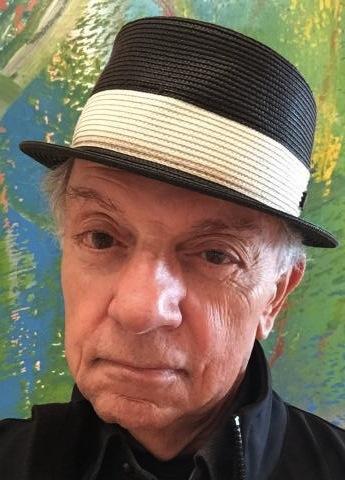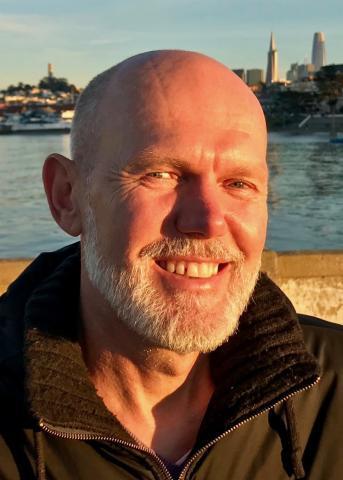Artist: Margaretha Miglo (authored by margarethamiglo)
Submitted by margarethamiglo on
“Paint like a fiend when the idea possesses you.”—Robert Henri
Submitted by margarethamiglo on
“Paint like a fiend when the idea possesses you.”—Robert Henri
Submitted by janagrover on
I am mainly a painter but also do some printmaking. My style is very contemporary and I am most interested in figurative work. My work primarily deals with emotional issues that we all share, our common burdens, heartaches, and disappointments. I also like to paint humorous portrayals of birds and animals. I work with acrylic paint and sometimes attach objects to my work.
Submitted by Deloris Thomas on
My work can be expressionistic in style. I feel that art makes its own statement, never static, always fluid, ever changing - arriving through the unconscious or dreamlike toward the conscious.
 Submitted by richardperri on
Submitted by richardperri on
The end is near.
 Submitted by kayweber on
Submitted by kayweber on
Papercutting is one of the oldest art forms, known to be traced back to around 105 AD, when paper was invented in China. My scissors drawings interweave multi-cultural stories of mythology and folk tradition. Earth, nature and it's deities, along with a long ribbon of myths are some of the resources I use in my themes. I like to give my work a modern but timeless appeal. Usually I go by its weight, texture and color, when I choose a paper. Like a sculptor, I envision the 3D aspect of the project, the artwork already within the paper. Texture and color have to correspond with the theme of the image. I work with paper, but at times, I use copper sheet as well. Over two decades ago, I started cutting little paper figures bookmarks, which quickly developed into much larger artwork. Papercutting is my passion!
Submitted by ramekon on
Ramekon O’Arwisters lives and works in San Francisco, California. He was a recipient of a 2002 Artadia Award and is 2014 Eureka Fellow, administered through the Fleishhacker Foundation, San Francisco. He has exhibited at the Luggage Store Gallery, San Francisco, California and the Kato Gallery, Tokyo, Japan. His numerous group exhibitions include Past Forward: African Spirituality in Contemporary Black Art at the African American Art & Cultural Complex (AAACC), San Francisco, California and Decoding Identity: I Do It For My People, Museum of the African Diaspora (MoAD), San Francisco, California. O’Arwisters was honored with his second San Francisco Arts Commission Individual Artist Grant in 2011. He has been actively involved in residences and guest lectures at Djerassi Resident Artists Program, Vermont Studio Center, and Sonoma State University. His works are included in the public collections of the Mary Lou Williams Center for Black Culture at Duke University and the Achenbach Foundation, California Palace of the Legion of Honor, San Francisco, California. He is currently working on an exhibition about art and spirituality for Communing With The Unseen: African Spirituality in Contemporary Art as an artist-in-residence at the M. H. de Young Memorial Museum, San Francisco, California.
 Submitted by clayseibert on
Submitted by clayseibert on
I have been very fortunate to have been able to attend painting workshops all over the world. During my many Open Studio experiences here in San Francisco one of the questions asked was "Why not stay here and capture this beautiful city". As a commercial artist working with the real estate community I have actually drawn and or painted over 8,000 of San Francisco's most beutiful homes. I am currently photographing many of the same homes and agree that this is indeed an incredible place to live and paint. I am now looking to combine my passion for drawing and watercolor painting with my love for San Francisco, my home now for 38 years.
Submitted by FlorenceHarlan on
My paintings are inspired by memory of places I have been, loved, lived and worked. These memories are enhanced by interpretation, impression and emotion and are not visual recordings. They attempt to capture a "sense of place" rather than specific details. In addition to solo shows on the Mendocino coast, in Mill Valley, Sacramento and San Francisco, my work is represented in private collections both in the United States and Europe. I have been the recipient of several awards. One painting was selected for inclusion in a group exhibit at the M.H. de Young Museum in San Francisco
 Submitted by bobarmstrong on
Submitted by bobarmstrong on
I have fallen in love with wood, and the carving that it invites. It is the inspiration for my carved paintings that explore the textural richness and variety of nature. Through carving I can investigate nature’s formal structures and wild beauty, and through painted color I can lure the eye with highly focused monochromatic color.
My work is influenced by Japanese art and by the California Arts and Crafts movement, with their shared insistence on grace and compositional beauty.
The poetic impulse is also crucial, and the poet Pablo Neruda offers a telling insight:
“Blossom and water and wheat kernel share one precious consistency: the sumptuous appeal of the tactile.”
It is this surprising and endlessly varied tactility that moves me to create this artwork.
Submitted by cristinamibarra on